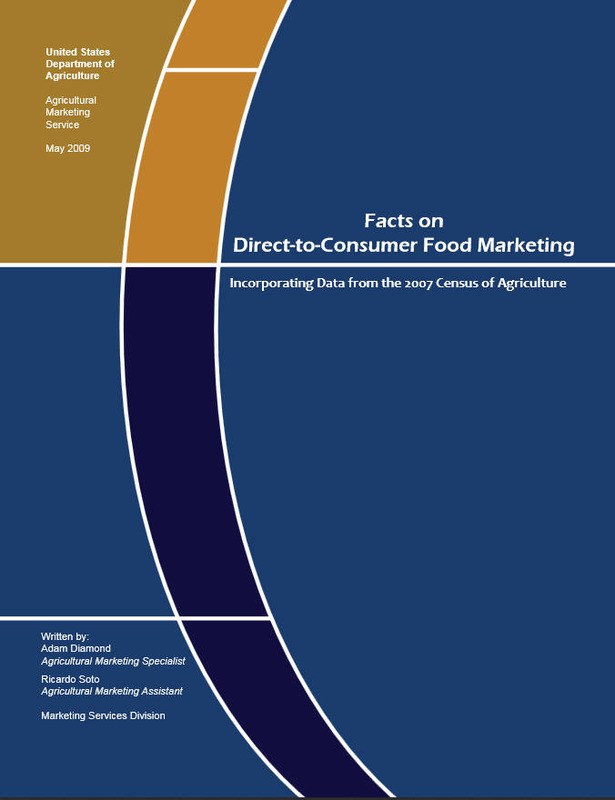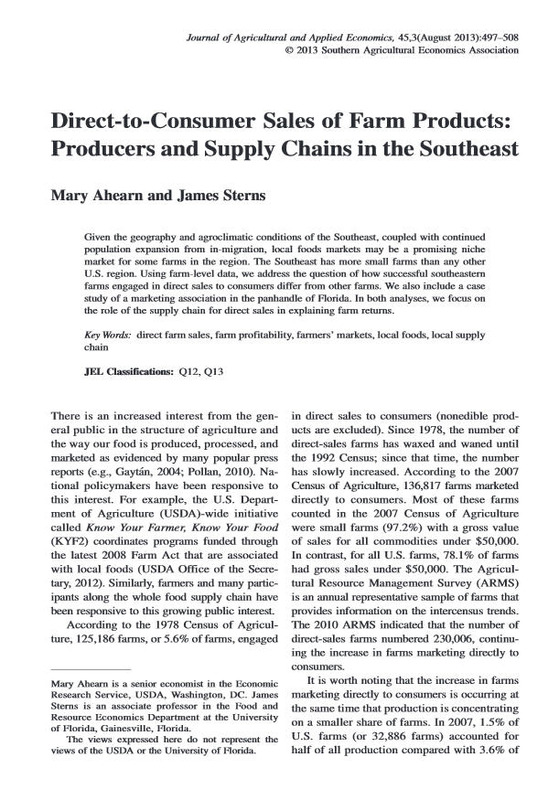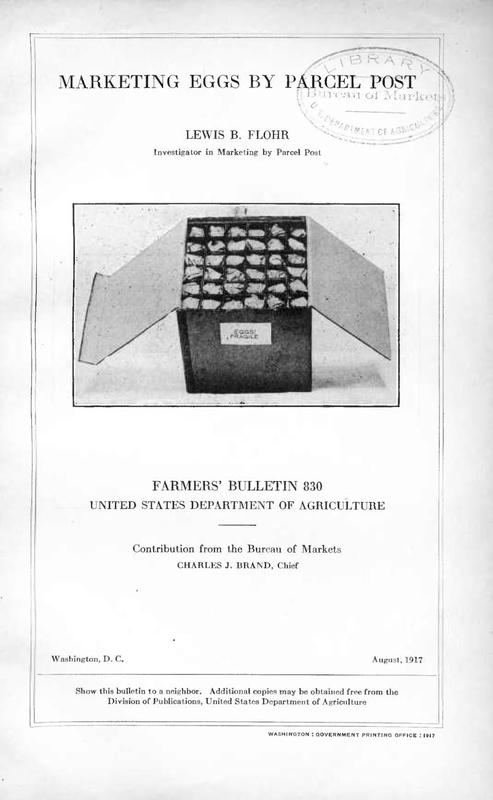Browse Items: 85
Facts on Direct-to-Consumer Food Marketing: Incorporating Data from the 2007 Census of Agriculture
Every 5 years, USDA’s National Agricultural Statistics Service (NASS) engages in a comprehensive study of the U.S. farm economy, known as the Census of Agriculture. The Census examines various facets of farm ownership, structure, and production and marketing practices. Beginning with the 1997 Census, NASS has collected specific information from…
Direct-to-Consumer Sales of Farm Products: Producers and Supply Chains in the Southeast
Given the geography and agroclimatic conditions of the Southeast, coupled with continued population expansion from in-migration, local foods markets may be a promising niche market for some farms in the region. The Southeast has more small farms than any other U.S. region. Using farm-level data, we address the question of how successful…
How to Grow Mushrooms
The mushroom in commerce is practically the fruit of the mushroom plant, and not the plant itself, as some might be led to believe. The plant proper is a white or bluish white mold, called mycelium, or, in garden language, spawn, that grows in fields and manure piles. In its younger stage it becomes a network of white threads, and it is from the…
Marketing Eggs by Parcel Post
Whether the marketing of eggs by parcel post should be attempted by any particular producer will depend on his present available markets, the possibility of securing a satisfactory customer or customers, and the care taken to follow tested and approved methods in preparing the eggs for shipment. Failures in attempting to ship eggs by parcel post…
Comb Honey
The present tendency in beekeeping is decidedly toward the production of extracted honey rather than of comb honey. The recent activity among beekeepers toward specialization, which necessitates the establishing of out-apiaries, and the rapidly increasing demand for extracted honey are among the factors bringing about this condition. Enormous…
 An official website of the United States government.
An official website of the United States government.






